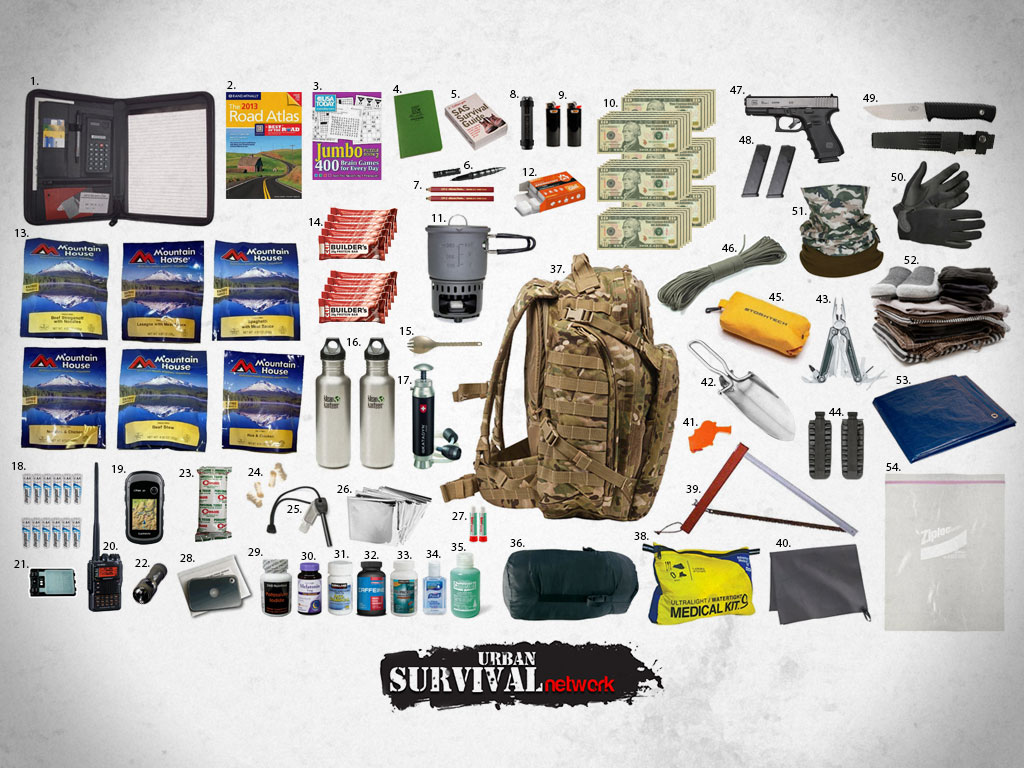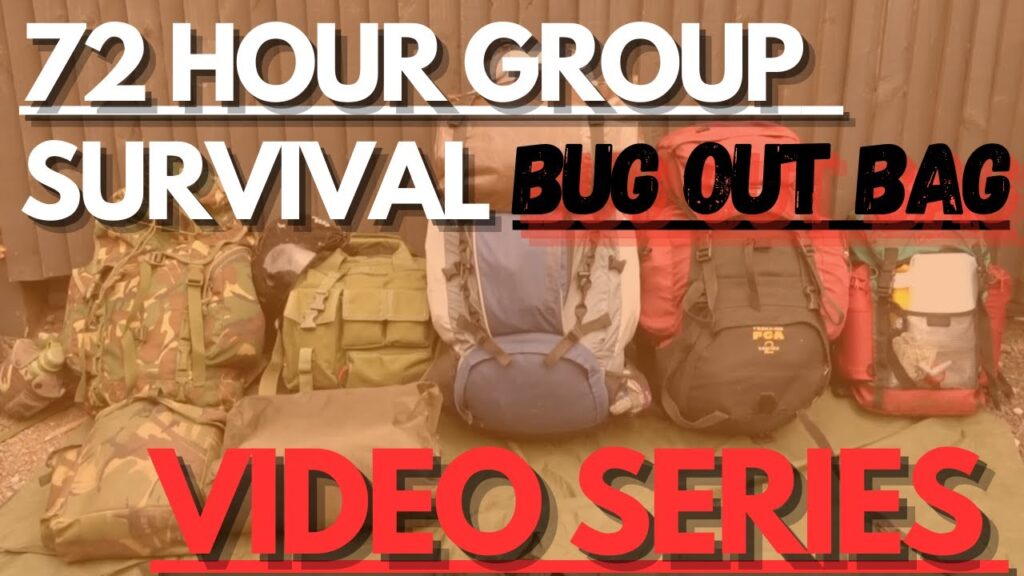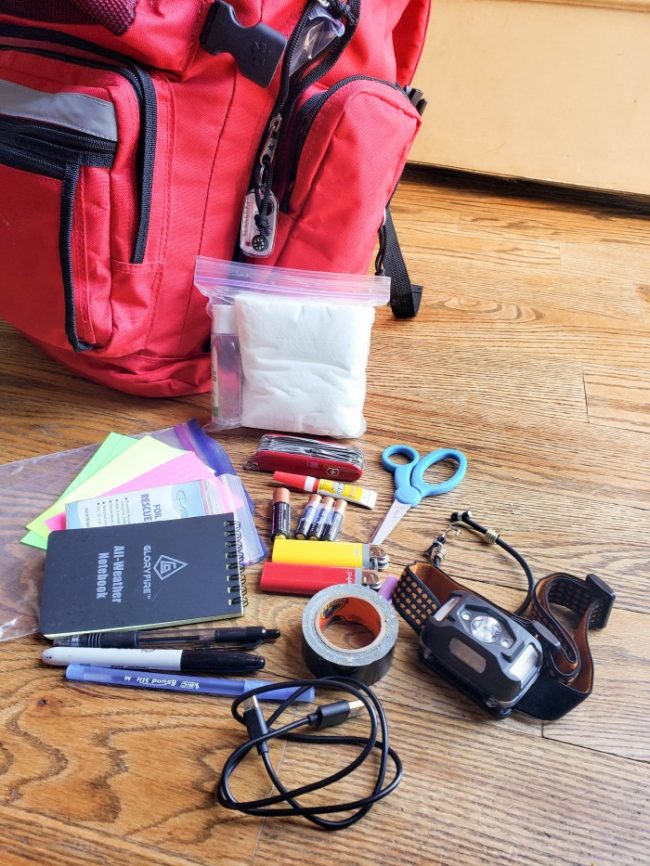
In this article, we will explore the fascinating world of emergency preparedness as we uncover the variances between two essential survival kits: the 72-hour kit and the bug-out bag. Curious about the differences? Look no further, as we shed light on these crucial tools that can make all the difference in a time of crisis. Whether you’re facing natural disasters or unexpected emergencies, understanding the distinctions between these two kits is crucial for being fully prepared. So grab a seat, and let’s dive into the world of 72-hour kits and bug-out bags!
Unveiling the Variances: 72-Hour Kits versus Bug-Out Bags

This image is property of cdn.kobo.com.
Definition and Purpose
Before we dive into the comparisons, let’s establish the definitions and purposes of 72-hour kits and bug-out bags. Both these emergency preparedness essentials serve the purpose of providing you with the necessary supplies and tools to sustain yourself during a crisis situation. Whether it’s a natural disaster, evacuation, or any other unforeseen event, having a well-equipped kit or bag can make all the difference in ensuring your safety and well-being.
72-Hour Kit
A 72-hour kit, also known as a “go-bag” or “grab-and-go kit,” is specifically designed to provide you with the essentials you need for survival during the first 72 hours of an emergency. This time frame is considered crucial as it allows emergency responders to assess the situation and provide assistance accordingly. The primary goal of a 72-hour kit is to keep you self-sufficient until help arrives or until you can reach a safe location.
Bug-Out Bag
On the other hand, a bug-out bag is designed for a more extended period of self-sufficiency during an emergency situation. It is meant to sustain you for an indefinite period, depending on the severity and duration of the crisis. Bug-out bags are typically assembled with the intention of leaving your home and heading to a predetermined safe location. These bags are often associated with scenarios like civil unrest, pandemics, or situations where staying in your home is no longer an option.
Duration
When it comes to duration, the key disparity between 72-hour kits and bug-out bags lies in the period of self-sufficiency they cater to.
72-Hour Kit
As the name suggests, a 72-hour kit is specifically crafted to sustain you for approximately three days. This is based on the assumption that during most emergencies, help or the ability to reach a safe location will arrive within 72 hours.
Bug-Out Bag
Unlike the limited duration of a 72-hour kit, a bug-out bag is designed to support you for a longer period. The duration can vary depending on the contents of the bag and your specific needs, but bug-out bags are typically intended to keep you equipped for at least 72 hours up to several weeks or even months in extreme cases.

This image is property of theprepared.com.
Components
Both 72-hour kits and bug-out bags comprise various supplies and items necessary for survival. Let’s explore the components of each in detail.
72-Hour Kit
A typical 72-hour kit includes essential items such as non-perishable food, water, first-aid supplies, a flashlight, a battery-powered radio, extra batteries, a multi-tool, personal hygiene products, a whistle, a dust mask, emergency blankets, extra clothing, and a small amount of cash. The focus is on providing short-term necessities to sustain you until help arrives.
Bug-Out Bag
Bug-out bags encompass a more extensive range of supplies, as they are intended to support you for a longer period away from home. In addition to the items found in a 72-hour kit, bug-out bags often include additional clothing, more substantial food supplies, water purification methods, camping gear, cooking utensils, a sleeping bag, a tent, tools for self-defense, communication devices, and important documents. The emphasis is on self-sufficiency and adaptability in a variety of challenging scenarios.
Mobility
When it comes to mobility, both 72-hour kits and bug-out bags should be readily transportable.
72-Hour Kit
Given that a 72-hour kit is intended to keep you self-sufficient until help arrives or until you can reach a safe location, its mobility is of vital importance. These kits are typically designed to be compact and lightweight, allowing for easy transportation on foot if needed. Backpacks or duffle bags with sturdy straps are the most common choices for packing a 72-hour kit.
Bug-Out Bag
Mobility is also a crucial factor in bug-out bags since they are intended for prolonged use away from home. Bug-out bags are generally larger and equipped with comfortable straps or frame systems, facilitating greater carrying capacity and ease of transportation, even over longer distances. These bags are specifically designed to support you during an evacuation or when you need to quickly leave your residence.

This image is property of www.urbansurvivalnetwork.com.
Storage
The way you store your emergency supplies also differs between 72-hour kits and bug-out bags.
72-Hour Kit
Given the relatively short duration these kits are designed to serve, it is common practice to store 72-hour kits in easily accessible and portable locations within your home. They can be stowed in a closet, under a bed, or near an exit, ensuring that you can grab them quickly during an emergency. It is essential to periodically check and rotate the supplies in your kit to ensure everything remains fresh and functional.
Bug-Out Bag
Bug-out bags, due to their larger size and extended duration of use, often require more careful consideration when it comes to storage. These bags should be pre-packed and easily accessible, but they can also be stored in a designated area near your emergency exit so that you can grab them quickly when needed. Additionally, it is recommended that you regularly inspect the contents of your bug-out bag and update them as needed.
Level of Preparedness
Both 72-hour kits and bug-out bags contribute to your overall level of preparedness, but they serve different purposes in terms of readiness.
72-Hour Kit
A 72-hour kit enhances your preparedness for short-term emergencies and allows you to be self-sufficient until help arrives. Having a well-stocked kit ensures that you have the necessary supplies to sustain yourself and your loved ones during the critical initial 72 hours when external assistance may be limited or unavailable. It provides peace of mind and the confidence to handle unforeseen circumstances.
Bug-Out Bag
A bug-out bag takes preparedness to the next level by providing you with the means to sustain yourself for a more extended period away from home. By having a bug-out bag ready and well-equipped, you increase your readiness to handle more severe and prolonged crises. It allows you to quickly and effectively evacuate to a safer location without worrying about the lack of essential supplies.

This image is property of i.ytimg.com.
Situational Applicability
The choice between a 72-hour kit and a bug-out bag depends on the specific emergency scenarios you anticipate or are likely to encounter.
72-Hour Kit
72-hour kits are particularly well-suited for situations where you need to shelter in place or where help is expected to arrive within a few days. They are ideal for localized emergencies such as power outages, severe storms, or temporary evacuation orders, where the primary goal is to remain self-sufficient until assistance is available.
Bug-Out Bag
Bug-out bags come into play when the situation necessitates leaving your home quickly and finding refuge elsewhere. They are best suited for scenarios like widespread natural disasters, civil unrest, or instances where staying at home becomes unsafe or impractical. A bug-out bag allows you to keep moving and adapt to changing circumstances while remaining self-reliant.
Cost
The cost of assembling a 72-hour kit or a bug-out bag can vary depending on the quality and quantity of items included.
72-Hour Kit
The cost of a 72-hour kit can range from $50 to $200, depending on the specific supplies you choose to include. Factors such as the quality of food, the durability of equipment, and the number of people the kit is designed to support can influence the overall cost. It is essential to strike a balance between affordability and reliability when assembling your kit.
Bug-Out Bag
Bug-out bags, due to their larger size and the need for more extensive supplies, can be pricier than 72-hour kits. On average, the cost of a bug-out bag can range from $200 to $500, or even higher, depending on the quality and quantity of the contents. The inclusion of items like camping gear, sturdy backpacks, and specialized equipment can significantly impact the overall cost.

This image is property of www.amomstake.com.
Common Misconceptions
There are a few common misconceptions surrounding both 72-hour kits and bug-out bags that are worth addressing.
Regarding 72-Hour Kits
One common misconception about 72-hour kits is that they are comprehensive enough to sustain you for an extended period. While they do provide essential supplies for the initial 72 hours, they are not meant to sustain you indefinitely. It is crucial to have realistic expectations and understand that additional preparations may be necessary for longer durations.
Regarding Bug-Out Bags
A common misconception about bug-out bags is that they are only necessary for extreme doomsday scenarios. While bug-out bags do prepare you for worst-case situations, they can also be instrumental during more common emergencies. By having a well-equipped bug-out bag, you are better prepared to face a wide range of crises, regardless of severity.
Conclusion
In conclusion, the differences between 72-hour kits and bug-out bags lie in their intended duration, components, mobility requirements, storage considerations, level of preparedness, situational applicability, and cost. Each serves a unique purpose in emergency preparedness, with the 72-hour kit catering to short-term self-sufficiency and the bug-out bag providing an extended period of sustainment and adaptability. Both are essential tools in ensuring your safety and well-being during unanticipated situations, and it is wise to have both in your arsenal of emergency supplies. Remember, preparations today can make all the difference tomorrow. Stay safe, be prepared, and take care of yourself and your loved ones.
